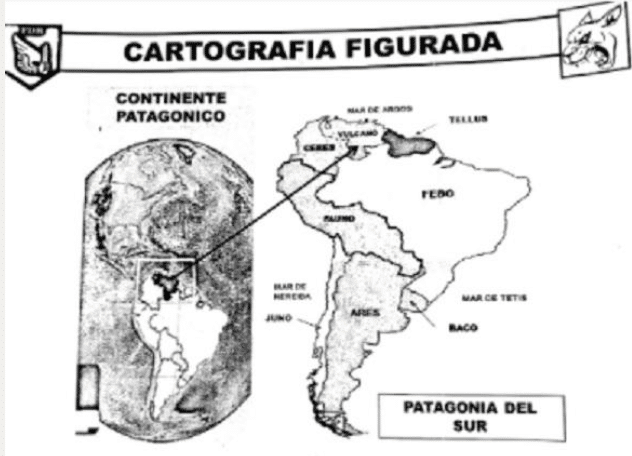
Imaginary map used for the Argentinian military drill "Puma," were a "humanitarian" invasion of Venezuela is sketched. Photo: El Cohete a la Luna.

Orinoco Tribune – News and opinion pieces about Venezuela and beyond
From Venezuela and made by Venezuelan Chavistas

Imaginary map used for the Argentinian military drill "Puma," were a "humanitarian" invasion of Venezuela is sketched. Photo: El Cohete a la Luna.
Editorial note: Bellow we translate the full report published by Argentinian journalist Horacio Verbitsky, from the news oultlet El Cohete A La Luna, exposing the military operation planned by Argentina to invade Venezuela in 2019, following Washington’s directives. In order to preserve a focus on materials related to Venezuela, a few paragraphs have been excluded.
Between April and July 2019, the [Argentinian] Army carried out the Puma Military Drill, which contemplated the invasion of Venezuela. The exercise was carried out in seven sessions at the Campo de Mayo garrison and by videoconference with the parachute brigade from Córdoba, the 10th Mechanized Brigade from La Pampa, and the commandos of the Special Operations Force, also from Córdoba. It included coordination with units of the Navy and the Air Force. In command was General Juan Martín Paleo, who was then commander of the rapid deployment force. Since March 2020 he is Chief of the Joint Chiefs of Staff of the [Argentinian] Armed Forces.
This exercise coincided with the United States escalation against the government of President Nicolás Maduro, which included the recognition of then president of the National Assembly, Juan Guaidó, as “interim president” of Venezuela. The first session conducted by [General] Paleo was held on April 15, 2019. On April 30, Guaidó led a military uprising called Operation Libertad. A [very small] group of [Venezuelan] soldiers helped with the escape of opposition politician Leopoldo López from house arrest. He was taken to a highway near a military base, where he was sheltered pending pronouncements from other units, a repeat of the 2002 coup attempt.
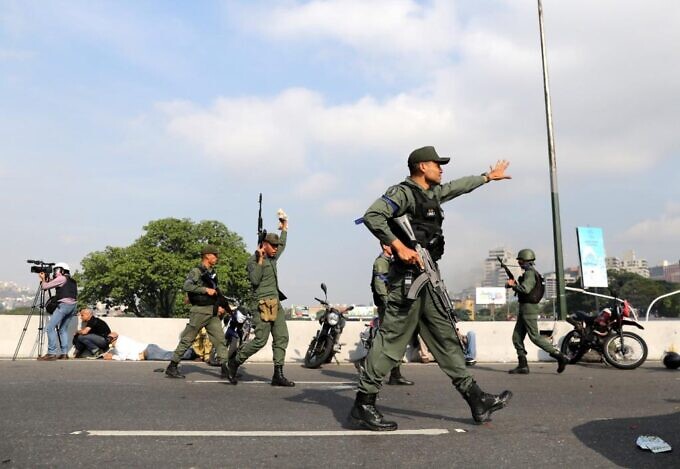
In Buenos Aires, Mauricio Macri, president of Argentina at the time, spoke up in favor of the coup plotters, did not recognize President Maduro, and treated Guaidó as head of state. However, more than 80% [in reality, closer to 99%] of Venezuela’s Armed Force remained loyal to the government.
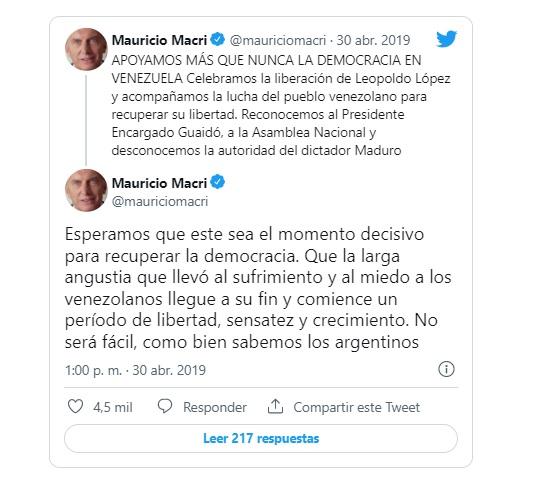
In the Puma exercise conducted by General Paleo, South America was referred to as South Patagonia. Venezuela was Vulcano, and its conflicting authorities were NM and JG, that is, the initials of Nicolás Maduro and Juan Guaidó. However, when the operation was described, the map was that of the Bolivarian Republic of Venezuela, and the names of its main cities were kept unaltered. In this paleolithic TEG Colombia became Ceres, both Guyana and Suriname was Tellus, Brazil became Phoebus, Peru and Ecuador were Faunus, Chile was Juno, Argentina was Ares, and Uruguay was Bacchus. Paraguay and Bolivia were not represented on the map.
RELATED CONTENT: Trapped in IMF Debt, Argentina Turns to Russia and Joins China’s Belt and Road
When the authorities of the Ministry of Defense, led by Agustín Rossi since December 2019, questioned him about the exercise, Paleo said that it concerned the planning of security for the G-20 meeting in Buenos Aires. This version does not hold: the G-20 met on November 30 and December 1, 2018, and the Puma military drill was held between April and July 2019. Now, aware of El Cohete A La Luna’s questions, he [Rossi] said that he was responding to an order from the then Chief of Staff, General Bari Sosa, to plan humanitarian assistance to Venezuela. Once again, due obedience.
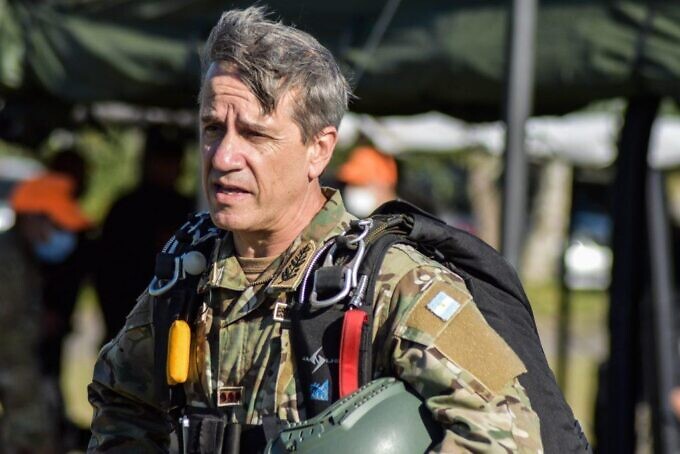
Humanitarian assistance and human rights are the usual excuses of the United States for its interventions anywhere in the world. In the planning of the Puma military drill, the Rapid Deployment Force was part of a multinational force, created by an imaginary United Nations resolution (which never happened in reality). The United States resorts to multilateralism when it receives adequate support. Otherwise, it forms a coalition of so-called voluntary nations that act unilaterally, as in the 2003 invasion of Iraq. In addition to the rapid deployment force, with its Command Company and Intelligence Section, members of the 6th Airborne Parachute Brigade, the 10th Mechanized Infantry Brigade, and Special Operations Force commandos also participated in the drill.
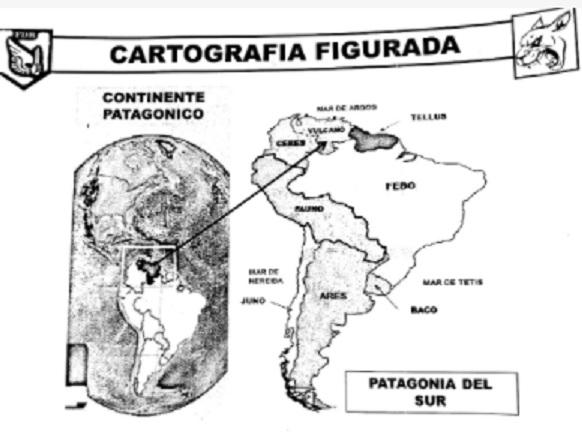
Trump’s strategy
In December 2017, President Donald Trump signed a National Security Strategy document. The central points that had guided the actions of the United States since the attack on the Pentagon and Wall Street in September 11, 2001 were terrorist threats and drug trafficking. Trump replaced these with the global confrontation with hostile powers such as China, Russia, and Iran. That presidential document states the militarization of foreign policy. The United States aspires to “Lead in Research, Technology, Invention, and Innovation” for which it must “Promote and Protect the U.S. National Security Base” against the penetration of “competitors such as China.” It also claims that the United States will take on the “anachronistic leftist authoritarian models” of Venezuela and Cuba because they deal with the US competitors China and Russia, who seek to “expand military linkages and arms sales across the region.” However, China also seeks to attract the region into its orbit through “infrastructure investments and trade strategies.”
Trump’s CIA chief, Mike Pompeo, who later became Secretary of State, supported Juan Guaidó’s call for the Venezuelan military to overthrow President Nicolás Maduro and thus favor “a peaceful transition to democracy.” Former Acting FBI Director Andrew G. McCabe revealed in his book The Threat that during a 2017 meeting Trump said the United States should go to war with Venezuela. According to McCabe, Trump’s verbatim phrase was: “They have all that oil and they’re at our back door.” In addition to the economic motivation, Trump was concerned about the vote of Cuban and Venezuelan exiles in Florida.
At the request of the United States, since 2017 Argentina had participated in the so-called Lima Group, which claimed that the constitutional order had been ruptured in Venezuela, and the Inter-American Democratic Charter should therefore be applied to it. In 2018, there was an attempt to assassinate Maduro with missiles fired from drones, as he was leading an outdoor military ceremony.
The main promoters of the military solution to the Venezuelan political crisis were the representative of President Donald Trump for Venezuela, Elliot Abrams, and the National Security Adviser, John Bolton. They were convinced that the Venezuelan military would desert the government and overthrow Maduro. To encourage them, they publicly promised to ignore any crime they had committed.
On February 23, 2019, the US and Colombian governments accused the Caracas government of setting fire to a truck carrying humanitarian aid from Colombia. But in March, the New York Times revealed that the video of the fire had been digitally manipulated to hide that the flames had been caused by a Molotov cocktail thrown by a Guaidó supporter.
The promise of the Southern Command
In May 2019, while General Paleo commanded the second and third session of the exercise of the Argentine Armed Forces to invade Venezuela, Admiral Craig Faller released the strategic document of the [US] Southern Command [SOUTHCOM] under his charge, entitled Enduring Promise for the Americas.
When speaking about the influence of the Southern Command in the affairs of our countries, there is not always an awareness of the significance that the region holds for the United States. A fundamental source of information is the Southern Command itself, in both the presentations of its commander before the Senate commissions of his country, and the public documents on strategy.
RELATED CONTENT: Colonialism by Other Means—the Case of Argentina and the IMF
In 2004, the then head of the Southern Command, General James T. Hill, reported that the region (and within it basically Venezuela) provided a third of the oil imported by the United States—that is, more than all the countries of the Middle East combined; it provided a commercial exchange equivalent to that which the United States had with all of Europe and, by 2010, it was estimated that it would exceed that which the United States would have with Europe and Japan combined. In 2001, the United States sold more to the Mercosur countries than to China and India combined.
In the 2019 document, Admiral Faller wrote that “the countries of the region maintain trade relations with the United States of more than $1.8 trillion each year.” This constitutes triple the volume of merchandise trade between the United States and Europe, which according to official statistics from the European Union, in 2018 was $673 million.
Faller’s report also says that between 2013 and 2017, “US direct investment in Latin America and the Caribbean exceeded $655 billion,” or an average of $130 billion per year. In 2018, according to the UNCTAD [United Nations Conference on Trade and Development] report, the total of direct foreign investment of any origin in Latin America was $151 billion.
In June 2019, Faller visited Buenos Aires and warned cadets from the Joint War College of the Armed Forces against the threat from China and Venezuela. That month, Paleo led the fourth, fifth, and sixth sessions of the military drill. In July, before the United States Senate Armed Services Subcommittee on Emerging Threats and Capabilities, Faller pointed out that China is trying to displace the United States as the main partner in the region. The mission of the Southern Command is to prevent it. Paleo led the final session of the Puma military drill during that time.
“Vulcano” [Venezuela] is about to ignite. Military drill “background”
General Paleo described the situation in the following words:
“A situation of regional instability has been generated in the countries of South Patagonia due to strong economic and political crises that are the focus of attention of the main international and regional organizations.”
“In the framework of this complex scenario, extra-regional actors have sought to increase their influence in the emerging countries of South Patagonia, whose strategic natural reserves place them at the center of their interests.”
“Likewise, the crisis and destabilization have accelerated from the political point of view in some countries of the subcontinent. This degenerated into internal partisan bidding, the emergence of armed movements, an increase in the presence of organized crime and narco-terrorism with proven influence from third countries.”
“The case of the greatest internal commotion in the region occurs in Vulcano. The government has resorted to a foreign policy with the clear intention of seeking the support of extra-regional actors in order to remain in power. This behavior, ignoring internal claims and those of the main international organizations, has provoked a strong rejection and its consequence was the application of various sanctions.”
“The internal situation of Vulcano is framed by a lack of a representative entity for its dual government (NM and JG) and an unprecedented humanitarian crisis, due to political disorganization and the lack of services and basic needs such as electricity, food, water, and medicines.”
“There is a breakdown of discipline in Vulcano [Venezuela] Armed and Security Forces due to profound differences between those who support the government and those who do not, leaving their tasks limited to the defense of specific national strategic objectives.”
“The government has resorted to the use of paramilitary groups to maintain control over the population, although it still has partial support from its armed and security forces.”
“The paramilitary groups carry out tactics of disinformation, propaganda, and manipulation of energy, food, and medicine supplies as a means of political capture of the population.”
“The countries of South Patagonia are member states of the United Nations Organization, where Febo and Ares this year are part of the Security Council.”
“In addition, the continent has a regional organization of the states of South Patagonia (OREPAS) to fight against shared problems of poverty, economic development, and civil protection. Ares (Argentina) and Febo (Brazil) are countries that impose their regional leadership and lead OREPAS (OAS) in order to promote integration and political stability within the region.”
“There are countries with border problems with Vulcano, such as Tellus (Guyana) and Ceres (Colombia). These states are supported by opposing extra-regional powers. This limits MERCOPAS (sic) and the UN from generating possibilities of humanitarian support to Vulcano.”
“The failed attempts at diplomatic solutions by regional and international organizations and the lack of the guarantee of human rights in Vulcano led the UN to issue resolution No. 1918/19 (MINUSVU) for intervention with a provisional multinational stabilization force.”
“The President of Ares, with the authorization of the National Congress, decided to respond to the UN request (decree No. 2005/19-Troops to participate in MINUSVU) for the integration of a provisional multinational force alongside other countries of South Patagonia (Phoebus and Juno), with the firm determination to strengthen the sovereignty and integrity of Vulcano, stop all violations of human rights, and collaborate with a broad political consensus to achieve a safe and lasting government transition.”
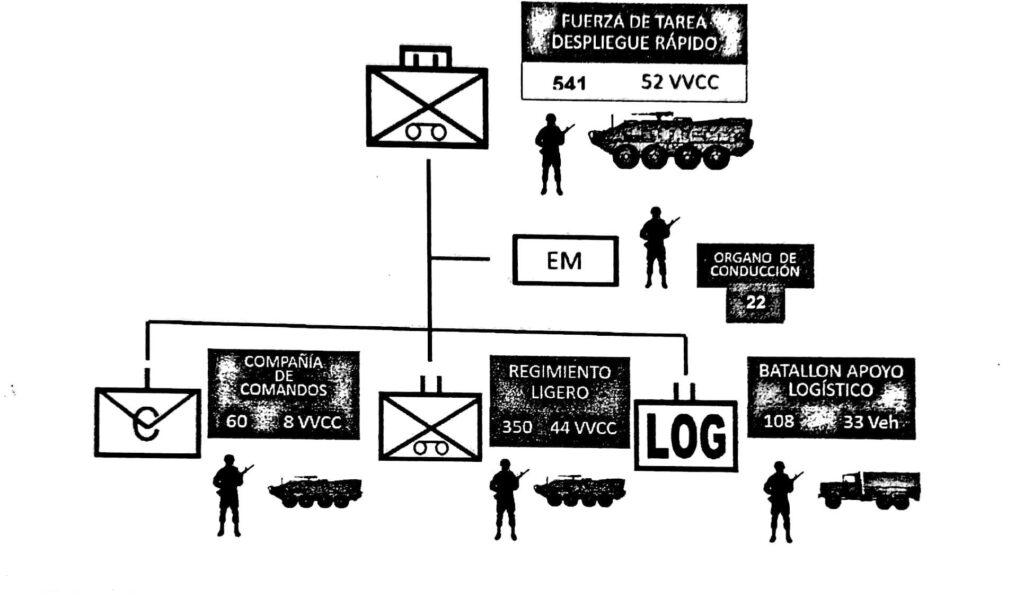
Ernesto Guevara and Zacarias Macabeo
“The Chief of the Joint Chiefs of Staff of the Armed Forces of Ares (Argentina) established Military Strategic Directive 04/1, ‘Security for the flow of humanitarian aid to Vulcano.'”
“The Rapid Deployment Force (FDR) has been designated by the Ares Army to integrate the provisional multinational force (FMP) as a ground component and plans are to be prepared for the enlistment of an Ares task force (FTA), to order, and their subsequent use in Military Peacekeeping Operations (OMP) in Vulcano (Venezuela) territory.”
The mission of the force, according to General Paleo, would be to provide defense for the operation, securing the humanitarian aid corridors. He envisioned three corridors. The one that would correspond to Argentina would be along the border with Ceres, that is, Colombia. That is where, in reality, the provocation of the burned trucks [with alleged humanitarian aid] took place.
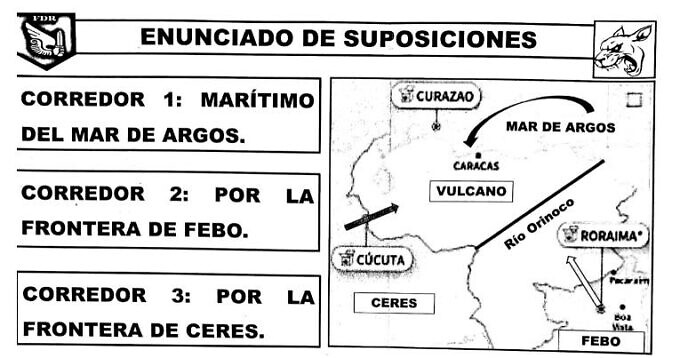
General Paleo said that “before NM’s [Nicolas Maduro] refusal to hand over the government due to its lack of representation before Congress and its weakening due to the interim President JG’s [Juan Guaido] international recognition, Vulcano has fallen into an institutional crisis. The security forces and armed forces of Vulcano have decided not to intervene in internal matters. This friction between the population and the government spurs NM to take the streets of the main cities. These demonstrations are repressed with paramilitary forces related to the government, called Simonist [maybe in reference to Simon Bolivar] popular collectives.”
“Because of the precision (sic) of the Simonist popular groups for exercising control of the population, they have carried out acts against human rights through repression and control of services and basic needs. A large population is occupying refugee camps in neighboring countries and the displaced are increasingly moving towards less developed sectors.”
“The solution that Vulcano is experiencing does not envision a peaceful settlement despite all the diplomatic measures carried out by the main regional countries and international organizations. This triggered the need for United Nations intervention with the Multinational Rapid Intervention Forces (MIRF). The purpose of the MIRF is to ensure humanitarian assistance to the population and to create the conditions for free and transparent presidential elections to be held as soon as possible.”
When defining “the Force in Opposition,” General Paleo wrote that “the main insurgency forces, their main headquarters (sic) are located on the western border of Vulcano with a radical left tendency and links to drug trafficking. The means of financing these groups are kidnappings, extortion, and doing business along the borders they share with Ceres [Colombia].”
“Among the main leaders are individuals known as Jerónimo Paz, Zacarías Macabeo, Ernesto Guevara, Julián and Carlos Chileno. It has troops of around 1,000 combatants in the states of Apure, Táchira and Barinas, in the western sector of Zulia, Mérida, Portuguesa, Cojedes, and Carabobo, and in its capital, Caracas. They also use the forest reserves of San Camilo and Ticoporó. It maintains a strong relationship with criminal groups in Ceres that they do not represent in their country of origin.”
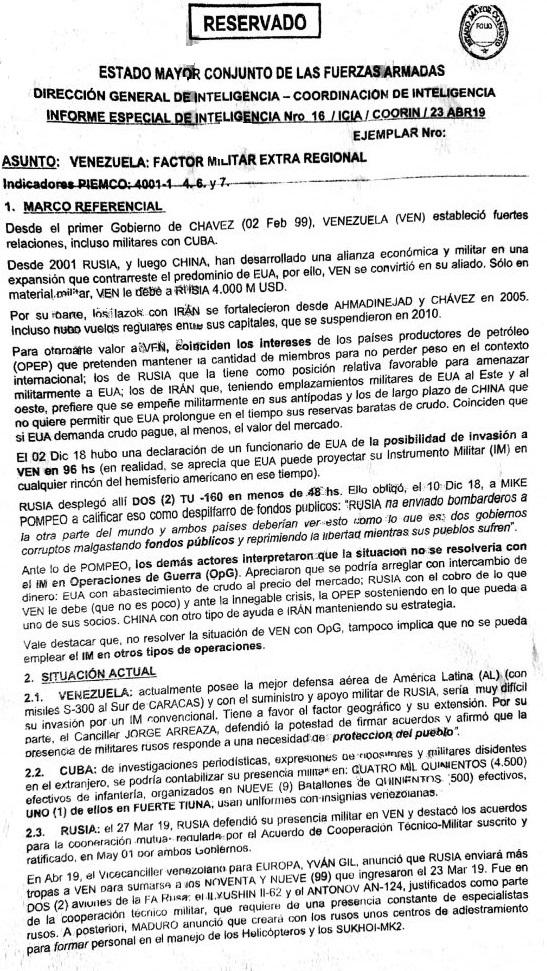
What he calls “popular Simonist collectives,” or armed paramilitary groups, carry out guerrilla attacks, characterized “by offensive actions. The mobility, activity, and reliability of the forces employed are of greater importance than the numerical strength. Rarely does it come to a decisive fight. It is carried out using surprise actions and quickly interrupted and retracted shocks. The guerrillas launch their attacks from their base of operations, their location is not fixed with a system of alternate positions.”
Regardless of the political and moral assessment appropriate to a plan to invade Venezuela—in which Argentine soldiers would do the dirty work for the United States—from a tactical point of view, a little over two years after the end of the Puma military drill, the alleged events on which it was based have proven to be erroneous. The situation in Venezuela has stabilized, the United Nations did not arrange to form any multinational intervention force, and the political forces of the ruling party and the opposition have settled their differences at the polls. The flow of migrants from Venezuela to Argentina has been reduced. Since his inauguration as President-elect, Alberto Fernández has objected to the options presented by the United States, and had the opportunity to say so face-to-face with Elliot Abrams.
Featured image: Imaginary map used for the Argentinian military drill Puma, in which a “humanitarian” invasion of Venezuela is sketched out. Photo: El Cohete A La Luna.
Translation: Orinoco Tribune
OT/JRE/SL